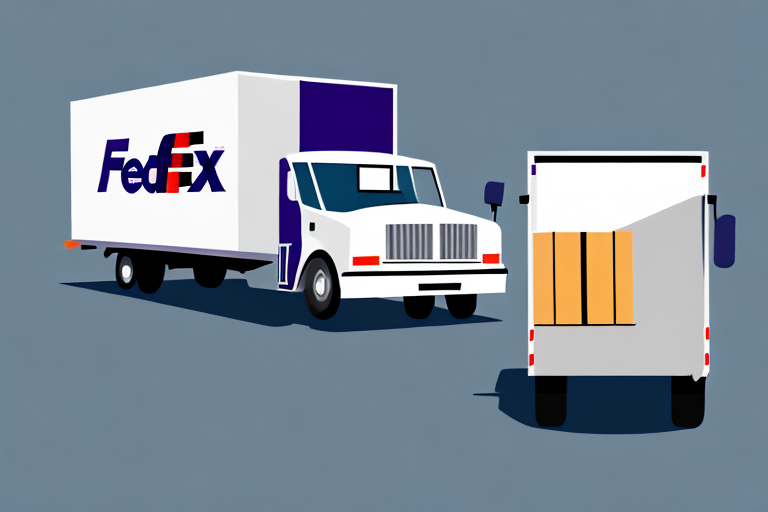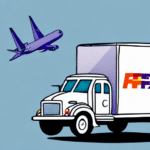Understanding Package Exceptions in Shipping
In the competitive world of shipping and logistics, a package exception refers to any deviation from the expected delivery process that hinders the timely and accurate arrival of a package. These exceptions can range from minor delays to significant issues like lost or damaged goods. Grasping the nature of package exceptions and effectively managing them is crucial for businesses that depend on shipping to deliver products to their customers. This section delves into the causes, types, and common reasons for package exceptions.
Why Package Exceptions Occur and Their Causes
Package exceptions can arise from a multitude of factors during the shipping process. According to the U.S. Census Bureau, the shipping industry faces challenges such as:
- Package Damage or Loss: Mishandling by carriers or inadequate packaging can lead to damaged or lost items.
- Incorrect Delivery Information: Errors in delivery addresses or incomplete information can cause delays.
- Recipient Issues: Package refusal or unavailability of the recipient can result in exceptions.
- Environmental Factors: Adverse weather conditions or traffic congestion often contribute to delays.
- Customs and Regulatory Hurdles: International shipments may face customs holds due to documentation errors or prohibited items.
- Access Limitations: Difficulty accessing delivery locations, especially in remote or secure areas, can impede successful deliveries.
Types of Package Exceptions
Understanding the different categories of package exceptions helps businesses address them more effectively. Common types include:
- Lost Packages: When a package cannot be located within the carrier's network.
- Damaged Packages: Physical harm to the package or its contents during transit.
- Delivery Failures: Unsuccessful delivery attempts due to various reasons such as incorrect address or recipient unavailability.
- Address Corrections: Necessary changes to delivery information post-shipping.
- Refused Packages: When recipients decline to accept the package, leading to its return.
Common Reasons for Package Exceptions
While there are numerous reasons for package exceptions, some stand out due to their frequency and impact:
- Carrier-Related Issues: Mistakes like incorrect shipping labels or insufficient postage are prevalent causes.
- Improper Packaging: Inadequate packaging materials can lead to product damage, necessitating returns or replacements.
- Customs Delays: International shipments often get stalled at customs, especially if documentation is incomplete or inaccurate.
- Environmental Delays: Natural disasters, extreme weather, or significant traffic congestion can disrupt delivery schedules.
Implementing stringent quality checks and choosing reliable carriers can mitigate these common issues.
Identifying and Resolving Package Exceptions
Effective management of package exceptions hinges on prompt identification and resolution. This involves monitoring shipment statuses, diagnosing the root causes of exceptions, and implementing corrective actions in collaboration with carriers.
How to Identify a Package Exception
Proactive monitoring is essential to catch package exceptions early. Businesses should:
- Use advanced tracking systems to monitor shipment statuses in real-time.
- Set up automated alerts for any deviations from expected delivery timelines.
- Analyze shipment data regularly to spot patterns that may indicate recurring issues.
Steps to Resolve a Package Exception
Once an exception is identified, follow these steps to address it effectively:
- Investigate the Cause: Determine whether the exception is due to internal errors, carrier issues, or external factors.
- Contact the Carrier: Reach out to the shipping provider to gather more information and initiate resolution processes.
- Communicate with the Recipient: Inform the customer about the issue and provide updates on the resolution timeline.
- Implement Corrective Measures: This could involve reshipping the product, issuing refunds, or enhancing packaging standards.
- Document the Incident: Keep detailed records to prevent similar issues in the future and improve overall shipping strategies.
Leveraging customer service teams to maintain open lines of communication during such incidents can significantly enhance customer satisfaction.
Preventing Future Package Exceptions
While it's challenging to eliminate all package exceptions, implementing preventive measures can drastically reduce their occurrence. This involves refining packaging practices, enhancing shipping processes, and adopting best practices tailored to your business needs.
Tips for Prevention
- Accurate Labeling: Ensure all packages have correct and complete delivery information to avoid misrouting.
- Durable Packaging: Use sturdy materials like double-walled boxes, bubble wrap, and protective inserts to safeguard contents.
- Proper Weight and Measurements: Accurately weigh and measure packages to prevent issues with shipping carriers.
- Reliable Carriers: Partner with reputable shipping companies that offer robust tracking and insurance options.
- Clear Communication: Set realistic shipping expectations with customers and inform them promptly of any potential delays.
Best Practices in Shipping Processes
Adopting industry best practices can enhance shipping reliability:
- Standardized Packaging Procedures: Develop and enforce consistent packaging standards across all shipments.
- Employee Training: Educate staff on proper packaging techniques and the importance of accurate labeling.
- Quality Control: Implement checkpoints to verify packaging integrity and shipping information accuracy before dispatch.
- Use of Technology: Integrate shipping software that automates label creation, tracks shipments, and manages inventory efficiently.
According to the Forbes Technology Council, businesses that adopt these practices can reduce shipping errors by up to 30%, leading to improved customer satisfaction and lower operational costs.
The Impact of Package Exceptions on Business and Customers
Package exceptions can have far-reaching consequences for both businesses and their customers. Understanding these impacts is vital for developing strategies to mitigate negative outcomes.
Effects on Customer Experience
Customers expect timely and intact deliveries. Package exceptions can lead to:
- Delayed Gratification: Waiting longer than expected for products can cause frustration and dissatisfaction.
- Product Loss or Damage: Receiving damaged or missing items erodes trust in the brand.
- Increased Inquiries and Complaints: Handling customer inquiries related to package exceptions can strain customer service resources.
According to a report by Statista, over 70% of customers would hesitate to reorder from a business that has a history of shipment issues.
Implications for Business Operations
Package exceptions can affect businesses in multiple ways:
- Increased Costs: Handling returns, reshipments, and customer service inquiries adds to operational expenses.
- Lost Revenue: Delays and losses can result in canceled orders and reduced sales.
- Reputation Damage: Persistent shipping issues can tarnish a brand's reputation, making it harder to attract and retain customers.
A study by Business News Daily found that 84% of customers who have a bad shipping experience are unlikely to shop with that retailer again.
Leveraging Technology to Manage Package Exceptions
Advancements in technology offer powerful tools to manage and minimize package exceptions. From real-time tracking to predictive analytics, businesses can harness these innovations to enhance their shipping processes.
Technological Solutions
- Real-Time Tracking Systems: Provide visibility into the shipment's journey, allowing businesses and customers to monitor progress and identify potential issues early.
- Automated Exception Notifications: Alert businesses instantly when an exception occurs, enabling swift response and resolution.
- Resolution Assistance Tools: Facilitate communication between businesses, carriers, and customers to streamline the resolution process.
According to McKinsey & Company, integrating advanced tracking and notification systems can reduce package exceptions by up to 25%.
Future Innovations
The future of package exception management lies in sophisticated technologies like artificial intelligence (AI) and machine learning (ML). These technologies can:
- Predict Exceptions: Analyze historical data to forecast potential exceptions and take preemptive actions.
- Optimize Routing: Enhance delivery routes to minimize delays caused by traffic or weather.
- Improve Packaging: Utilize AI to design packaging that better protects contents and reduces damage during transit.
Early adopters of AI-driven solutions report a 20% improvement in exception management efficiency, according to a report by Forrester.
Real-Life Examples and Case Studies
Examining real-life scenarios provides valuable insights into effective package exception management. Here are some case studies demonstrating how businesses have navigated shipping challenges:
Case Study: Reducing Damaged Packages for an Online Retailer
A small online retailer faced a high rate of damaged packages, leading to increased returns and customer complaints. After analyzing the issue, they discovered that their packaging materials were insufficient for protecting fragile items. The retailer implemented the following changes:
- Upgraded to double-walled boxes and added bubble wrap for cushioning.
- Trained staff on proper packaging techniques to ensure consistency.
- Partnered with a new carrier known for careful handling of packages.
As a result, the retailer saw a 40% decrease in damaged packages and a significant boost in customer satisfaction.
Case Study: Improving Address Accuracy for a Subscription Service
A subscription-based business experienced frequent delivery failures due to incorrect or incomplete addresses. To address this, they:
- Implemented an address validation tool during the checkout process to ensure accuracy.
- Encouraged customers to update their shipping information regularly.
- Established a protocol for swift correction of any address discrepancies identified post-order.
These measures led to a 30% reduction in delivery failures and enhanced overall operational efficiency.
The Future of Package Exception Management and Its Potential Implications
As the shipping industry evolves, so does the approach to managing package exceptions. Future trends indicate a shift towards more automated, data-driven strategies that enhance efficiency and customer satisfaction.
Emerging Trends in Exception Management
- Automation and AI: Increased use of AI to predict and prevent exceptions before they occur.
- Blockchain Technology: Enhances transparency and traceability in the shipping process, making it easier to identify and resolve issues.
- Internet of Things (IoT): Deploying IoT devices for real-time monitoring of shipments, providing instant alerts for any deviations.
Potential Implications for Businesses
Embracing these technological advancements can offer several benefits:
- Enhanced Efficiency: Automation reduces manual interventions, speeding up exception resolution.
- Cost Savings: Predictive analytics can prevent costly errors and reduce the need for reshipments.
- Improved Customer Trust: Transparent and reliable shipping processes strengthen customer relationships.
Looking ahead, businesses that invest in advanced exception management technologies are likely to gain a competitive edge, providing superior service and fostering long-term customer loyalty.






















